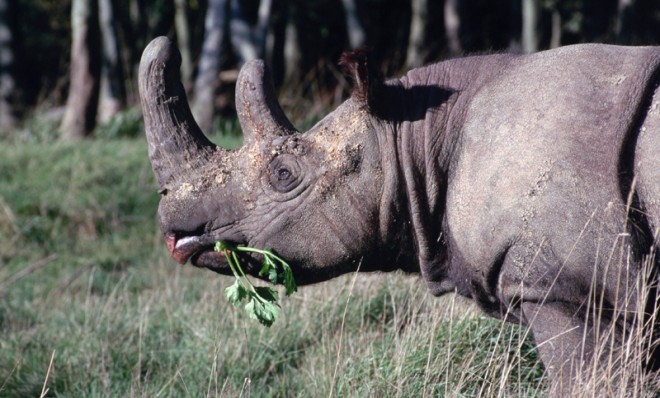Can incest save the Sumatran rhino?
The Cincinnati Zoo says it's a desperate but necessary move


The Cincinnati Zoo plans to mate its lone female Sumatran rhino, 9-year-old Suci, with the only other member of the species on the continent. The hitch: The would-be father is Suci's little brother, Harapan.
The prospect of rhino incest elicited some squirming on Twitter — MSNNow called the idea "icky" — and critics of captive-breeding programs say the project would cause more harm than good, as animals born in captivity lack survival skills and are more likely to spread defective genes.
While scientists agree that the plan is obviously not ideal, as genetic diversity is a key to the species' long-term survival, there aren't many, if any, other options. The only other male Sumatran rhino in captivity is another brother of Suci, says the conservation group Save the Rhino. A crisis summit in April revealed there are fewer than 100 of the two-horned, hairy rhinos left in the world, so conservationists are under pressure to breed more, fast.
The Week
Escape your echo chamber. Get the facts behind the news, plus analysis from multiple perspectives.

Sign up for The Week's Free Newsletters
From our morning news briefing to a weekly Good News Newsletter, get the best of The Week delivered directly to your inbox.
From our morning news briefing to a weekly Good News Newsletter, get the best of The Week delivered directly to your inbox.
"No one wants to breed siblings, it is something we strive to avoid, but when a species drops below 100 individuals, producing more offspring as quickly as possible trumps concerns about genetic diversity," says Terri Roth, who heads the zoo's Center for Research of Endangered Wildlife. "I am not willing to sit idle and watch the last of a species go extinct."
The Cincinnati Zoo has a record of success. It has already bred three Sumatran rhino calves, including Harapan, who is now 6 years old. Sumatran rhinos, direct descendants of the woolly rhinos of the Ice Age, are considered to be one of the planet's most endangered large mammals. Their numbers have dropped by roughly 90 percent since the mid-1980s, because of poaching for their horns and the destruction of their habitat.
"When your species is almost gone," Roth says, "you just need animals and that matters more than genes right now — these are two of the youngest, healthiest animals in the population."
A free daily email with the biggest news stories of the day – and the best features from TheWeek.com
Harold Maass is a contributing editor at The Week. He has been writing for The Week since the 2001 debut of the U.S. print edition and served as editor of TheWeek.com when it launched in 2008. Harold started his career as a newspaper reporter in South Florida and Haiti. He has previously worked for a variety of news outlets, including The Miami Herald, ABC News and Fox News, and for several years wrote a daily roundup of financial news for The Week and Yahoo Finance.
-
 Political cartoons for December 7
Political cartoons for December 7Cartoons Sunday’s political cartoons include the Trump-tanic, AI Santa, and the search for a moderate Republican
-
 Trump’s poll collapse: can he stop the slide?
Trump’s poll collapse: can he stop the slide?Talking Point President who promised to ease cost-of-living has found that US economic woes can’t be solved ‘via executive fiat’
-
 Codeword: December 7, 2025
Codeword: December 7, 2025The daily codeword puzzle from The Week
